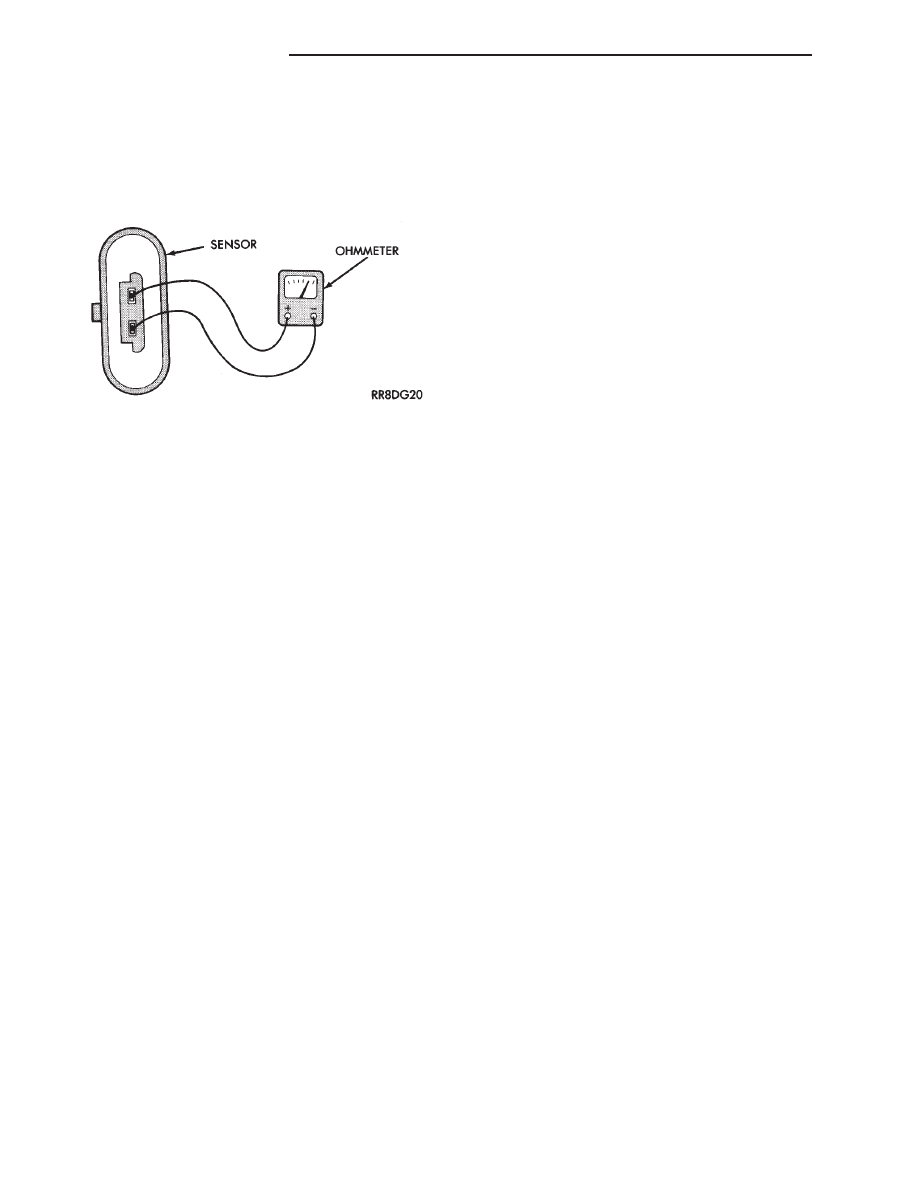Chrysler Le Baron, Dodge Dynasty, Plymouth Acclaim. Manual - part 294

Refer to the appropriate Powertrain Diagnostics Pro-
cedure Manual. Refer to the wiring diagrams section
for circuit information.
COOLANT TEMPERATURE SENSOR TEST
(1) With key off, disconnect wire connector from
coolant temperature sensor (Fig. 9).
(2) Connect one lead of ohmmeter to one terminal of
coolant temperature sensor.
(3) Connect the other lead of ohmmeter to remaining
terminal of coolant temperature sensor. The ohmmeter
should read as follows;
• Engine/Sensor hot at normal operating temperature
around 200°F should read approximately 700 to 1,000
ohms.
• Engine/Sensor at room temperature around 70°F,
ohmmeter should read approximately 7,000 to 13,000
ohms.
To test the coolant temperature sensor circuits,
refer to the DRBII scan tool and the appropriate
Powertrain Diagnostic Service manual.
MANIFOLD ABSOLUTE PRESSURE (MAP) SENSOR
TEST
Refer to the appropriate Powertrain Diagnostic Pro-
cedure manual.
CRANKSHAFT POSITION SENSOR AND CAMSHAFT
POSITION SENSOR TESTS
Refer to the appropriate Powertrain Diagnostic Pro-
cedure manual.
Fig. 9 Coolant Temperature Sensor Test
8D - 38
IGNITION SYSTEMS
Ä